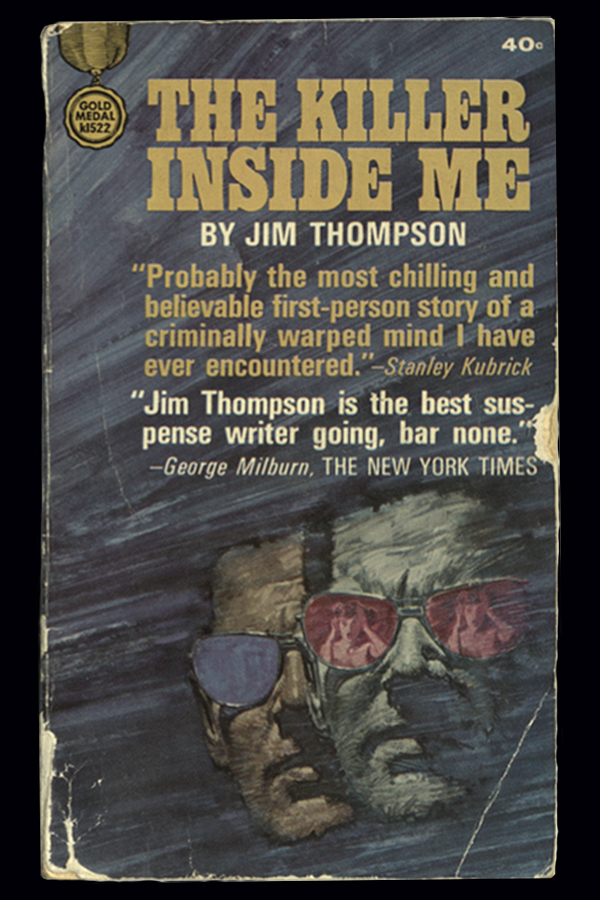Campus News
Alumnus entrusts his pulp fiction collection to UB
UB alumnus George Kelley in the University Archives holding several examples of his pulp fiction collection. Photo: Douglas Levere
By BARBARA BYERS
Published May 22, 2020
It happened to four-time UB alumnus George Kelley as a boy, when he went away to summer camp. His mother took his absence as the perfect opportunity to tackle the clutter that had overtaken his adolescent bedroom. When he got home, he was devastated to find that she had tossed his entire comic book collection.
“I was crushed. And then I just couldn’t go back to comic books,” Kelley says “I had to move on to paperbacks ... and I became much neater, so my mom wouldn’t throw them away.” A lesson for us all.
That incident, though painful for Kelley, became a boon for UB when he made the decision in 1994 to donate his extensive pulp fiction collection to the UB Libraries. “I earned three master’s degrees and a PhD from UB, so I feel like I should pay back all the amazing things UB gave me. I’ve had a great life.”
Now more than 30,000 editions strong, the priceless collection is a resource for enthusiasts as well as academics studying the emerging field of fandom. “As an academic research library, we’re fortunate to be the stewards of these amazing materials,” says Evviva Weinraub Lajoie, vice provost for university libraries. “No other university can claim such a collection.”
Some book covers from the Kelley collection.
To some, pulp fiction cover art is even more valuable than the stories inside. In fact, Kelley says, sometimes the compelling ─ and often provocative ─ scenes depicted on the cover had nothing to do with the story line. “It didn’t matter. The art sold the book.”
Kelley’s favorite pulp fiction artist, Robert McGinnis, illustrated more than 1,200 covers and 40 movie posters, including a number in the Kelley collection. “I consider [books with McGinnis art] to be sculptures,” Kelley says. “Today people collect them, but they might not even read the book. They just want it for the cover.”
Wood pulp, the cheap and accessible paper on which the books were printed, is notoriously fragile. To ensure the collection’s long-term survival, Kelley has also made a commitment to UB for the materials to undergo a deacidification process.
“A collection like this needs meticulous attention,” says Ron Gaczewski, preservation officer and head of the Libraries Student Center. “Thankfully, George had the foresight to store each book in a Ziploc bag, which was fortuitous. It’s not a solution in and of itself, but it helped,” Gaczewski says. “We are also grateful that he is helping to support the additional preservation work as well.”
UBNow asked Kelley about the collection and his gift to UB during a recent visit to campus.
How did you become such a passionate collector?
My love of reading came from my parents and our weekly trips to the library to borrow books. As an adult, when I was traveling as a consultant, I would visit used bookstores and read the books while I waited for my flight. Instead of getting rid of them, I saved them, and it grew from there.
I also think some people have the collecting gene, including me. You can’t imagine the happiness you feel when you find a really good rare book. You just feel exhilarated. It’s fabulous.
Is this collection the largest of its sort?
It’s hard to say, but it’s specialized. UB has things here that nobody else has, not even the Library of Congress. And they’re in much better shape, too.
Pulp fiction and fandom are emerging areas of academic study. What do you think that says about our society or our culture? What do these books reveal?
I think for a lot of people today there’s too much reality. So, people want a fantasy. It’s escapism. I like to escape into humor, but humor’s hard because not everybody thinks the same thing is funny. But a vampire’s a vampire’s a vampire, so that makes it pretty simple.
Is pulp fiction a thing of the past?
Absolutely not. Modern-day science fiction, detective stories and romance novels are extensions of pulp fiction from decades ago. A good modern example is 50 Shades of Gray [by E.L. James].
As an expert, do you get asked to speak about pulp fiction or your collection?
Yes, particularly at science fiction conventions and mystery conventions. In fact, I just moderated a panel at Bouchercon 50 [the World Mystery Convention] about paperbacks and paperback collecting. The audience was thrilled to hear about UB preserving this stuff because the books were meant to be disposable, like newspapers.
Why did you decide to donate your collection, and why UB?
Well, I stored the books in my basement because the weight of it would have collapsed the floors upstairs. And finally, one day when my wife couldn’t get to the washer and dryer, she said, ‘You have to choose between clean clothes and the books.’ So I contacted UB, and fortunately you were interested.
This collection brings me joy, and it brings me more joy to know that UB has it, and that you’re taking care of it for the next generation. People are going to look at this and marvel because there won’t be anything else like it. Everything’s changed in publishing, art, illustration. Now, everything’s digital. Everything’s video. So I think it’s important to understand what came before.
What are your hopes for this collection?
Ideally, since you have the source material, I want to see it maintained and accessible for future generations.
When Kelley isn’t at home reading, you may find him hunting for books to add to his collection. Most often he frequents The Book Corner in Niagara Falls, and Old Editions in North Tonawanda, which, he admits, is “dangerously close” to his house.




















